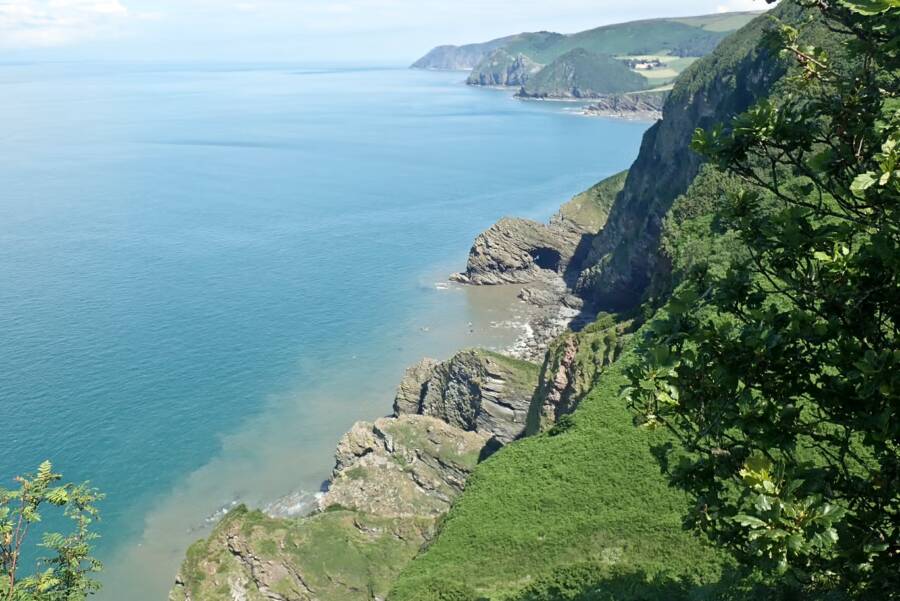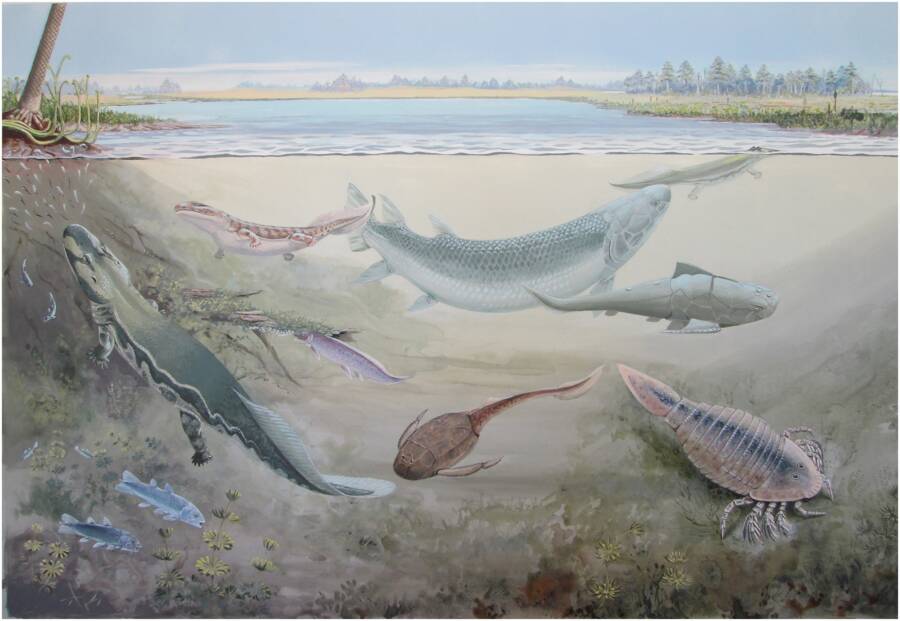The 390-million-year-old fossilized forest represents a period when marine life on Earth was diversifying and the first four-legged amphibians made their way onto land.

Neil Davies / University of CambridgeRipple marks left on the floor of this prehistoric forest.
Researchers in the United Kingdom recently made a shocking discovery: a prehistoric fossil forest dating back 390 million years, making it the oldest known forest in the world.
Their findings, published in the Journal of the Geological Society, revealed that this prehistoric forest belonged to a geological period known as the Devonian period, which occurred between 419 million and 358 million years ago.
What Did These Ancient Trees Look Like?
The tree remains were found in the Hangman Sandstone Formation near Minehead, England, along the Devon and west Somerset coasts. There, researchers identified various plant debris, logs, and roots preserved within the sandstone.
The fossilized trees would have looked somewhat like palms, but with thin trunks and hollow centers.
“This was a pretty weird forest — not like any forest you would see today,” Professor Neil Davies of Cambridge University’s Department of Earth Sciences said in a press statement. “There wasn’t any undergrowth to speak of and grass hadn’t yet appeared, but there were lots of twigs dropped by these densely packed trees, which had a big effect on the landscape.”

Neil Davies / University of CambridgeThe sandstone cliffs in southwestern England where the discovery was made.
The research team was composed of researchers from both Cambridge and Cardiff University, who identified these prehistoric plants as Calamophyton, saying they were something like “prototypes” of modern trees.
“The Devonian period fundamentally changed life on Earth,” Davies said. “It also changed how water and land interacted with each other, since trees and other plants helped stabilize sediment through their root systems, but little is known about the very earliest forests.”
Life In The Devonian Period
The Devonian period is also sometimes referred to as the “Age of Fishes,” as there were a number of diverse and oftentimes strange creatures swimming throughout Earth’s seas during this time. Famously, this was the period that saw the emergence of coil-shelled ammonites.
Toward the end of the Devonian period, the first four-legged amphibians appeared — the first signs of vertebrate life moving onto land.

Wikimedia CommonsMarine life during the Devonian period.
At the time, North America, Greenland, and Europe were a single landmass occupying the Northern Hemisphere as a supercontinent called Laurussia or Euramerica. The overall climate, globally, was thought to be relatively warm, with little evidence of ice caps.
While marine animals and oceans comprised most of Earth’s life, the Devonian period marked a major change for life on Earth — and marked the first appearance of seed-bearing plants.
Early Plant Life On Earth
Previously, the oldest forest on Earth was believed to be in an abandoned quarry near Cairo, New York.
At the time, Cardiff’s Dr. Christopher Berry, who was also involved in the new study, told Science, “The Cairo site is very special.”
That site holds fossilized tree roots that date back 385 million years. But the newly discovered fossils at Minehead are even older.
“When I first saw pictures of the tree trunks, I immediately knew what they were, based on 30 years of studying this type of tree worldwide,” Dr. Berry said of the new discovery. “It was amazing to see them so near to home. But the most revealing insight comes from seeing, for the first time, these trees in the positions where they grew.”

Neil Davies / University of CambridgeThe fossilized, palm-like trees known as Calamophyton.
During the Devonian period, this site would have been a semi-arid plain with small river channels from nearby mountains crisscrossing the landscape. Rather than the foliage-rich forests of today, this prehistoric forest would have more closely resembled a sedimentary desert of sorts.
It was also the first time rivers were impacted by the buildup of sediment that resulted from the Calamophyton trees shedding debris, altering the way they flowed across the rocky landscape.
“The evidence contained in these fossils preserves a key stage in Earth’s development, when rivers started to operate in a fundamentally different way than they had before, becoming the great erosive force they are today,” Davies said.
“People sometimes think that British rocks have been looked at enough, but this shows that revisiting them can yield important new discoveries.”
After reading about the discovery of the world’s oldest fossilized forest, explore nine of the world’s oldest structures and the stories behind them. Then, meet Ötzi the Iceman, the oldest preserved human being.





